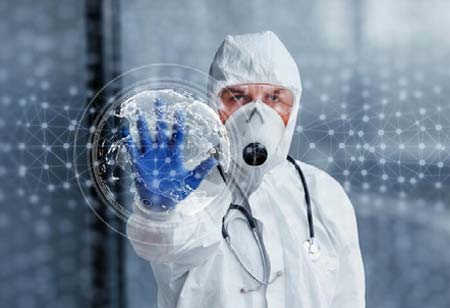Thank you for Subscribing to Healthcare Business Review Weekly Brief
Be first to read the latest tech news, Industry Leader's Insights, and CIO interviews of medium and large enterprises exclusively from Healthcare Business Review
Navigating the Infection Prevention Landscape with Innovative Solutions
The U.S. infection prevention solutions market has expanded considerably in recent years. As the market continues its dynamic evolution, a comprehensive understanding of the underlying drivers, persistent challenges, and emerging trends is imp

By
Healthcare Business Review | Monday, January 20, 2025
Stay ahead of the industry with exclusive feature stories on the top companies, expert insights and the latest news delivered straight to your inbox. Subscribe today.
The U.S. infection prevention solutions market has expanded considerably in recent years. As the market continues its dynamic evolution, a comprehensive understanding of the underlying drivers, persistent challenges, and emerging trends is imperative for stakeholders seeking to maintain a competitive edge and navigate the infection prevention landscape.
Several interrelated factors drive the growing demand for infection prevention solutions, each reflecting the increasing complexity of healthcare environments. The rising incidence of healthcare-associated infections (HAIs), which affect approximately one in 31 hospital patients daily, exemplifies the critical need for effective infection control measures. This challenge is further compounded by the mounting pressures from regulatory bodies such as the CDC, OSHA, and CMS, which impose stringent infection control guidelines.
Technological advancements have also transformed the field, with innovations such as automated disinfection systems, ultraviolet (UV) sterilization, and antimicrobial surface coatings enhancing the efficacy and efficiency of infection control efforts. These solutions, alongside predictive analytics and automated hand hygiene tracking systems, enable healthcare facilities to adopt more precise, data-driven approaches to infection prevention.
However, challenges in the form of high implementation costs, pathogen resistance, and staff compliance persist in the infection prevention market. Smaller healthcare facilities and outpatient clinics often struggle with the upfront costs of advanced solutions like automated UV disinfection systems and antimicrobial surfaces. The rise of resistant pathogens also demands continuous updates to infection control protocols, requiring ongoing investment in research and technology. Even with the right tools in place, ensuring staff compliance remains challenging, as the proper implementation of infection prevention measures requires ongoing, resource-intensive training and retraining.
In response to these challenges, recent developments within the sector include predictive analytics and AI, which are increasingly used to enhance infection control by analyzing data on patient admissions, infection patterns, and environmental factors. Antimicrobial coatings infused with silver or copper ions are gaining traction, offering continuous protection on high-contact surfaces and complementing regular disinfection efforts. Additionally, mobile and ondemand infection prevention services are expanding beyond hospitals to outpatient clinics, schools, and corporate offices, addressing the growing need for flexible, on-site disinfection in high-density, public-facing environments.
The market players are strategically focused on leveraging competitive tactics such as mergers and acquisitions, new product development, and geographic expansion to strengthen their market position.
Contemplating the future of the infection prevention market evokes a picture of stable growth and progress. The global infection control market was valued at USD 214.0 billion in 2022 and is expected to grow at a compound annual growth rate (CAGR) of 6.7 percent. This expansion is crucial for strengthening healthcare resilience against evolving pathogens and protecting public health.






